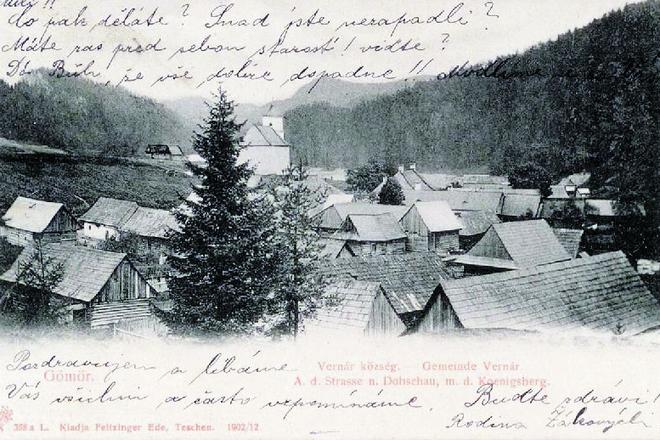THIS POSTCARD from 1902 comes from the workshop of famous publisher Edo Feitzinger. It depicts the mountain village of Vernár, which lies in the eastern headlands of the Low Tatras.
The village and its outlying areas are situated at an elevation ranging from 778 to 1,545 metres above sea level, indicating that life here was particularly difficult. Thanks to the vast surrounding forests, Vernár inhabitants were able to log wood and use it to make various products, like shingles and wooden tableware. Speaking of wood, notice that in the postcard, apart from the church, there is not a single building constructed from material other than wood.
Vernár shepherds grazed their herds in forest meadows as well as on the Kráľova hoľa mountain. But their life here was not an idyll; rather, it was demanding and dangerous work. A record states that in summer 1641, an unexpected chill on August 5 caught the shepherds working on this mountain off guard. The extreme frost killed both shepherds and 150 horses.
A few centuries later, during the Slovak National Uprising, all male adult inhabitants of Vernár engaged in the defence of the village, and with their knowledge of the local terrain, they managed to fend off several attacks from German units before ultimately surrendering. The Germans originally intended to shoot all inhabitants out of revenge, but they rounded up 13 men and sent them to concentration camps instead.


